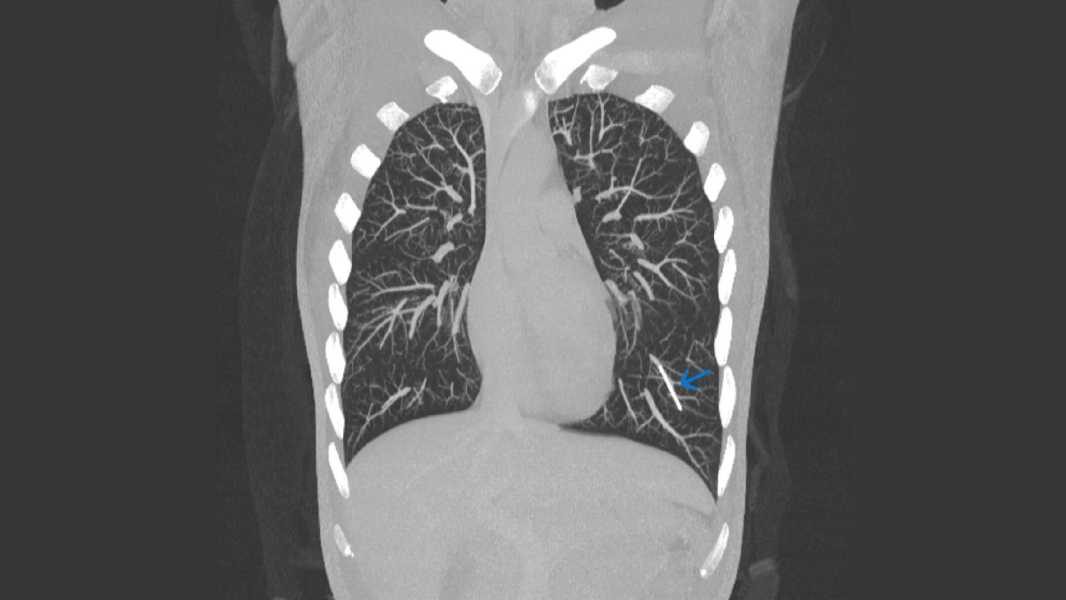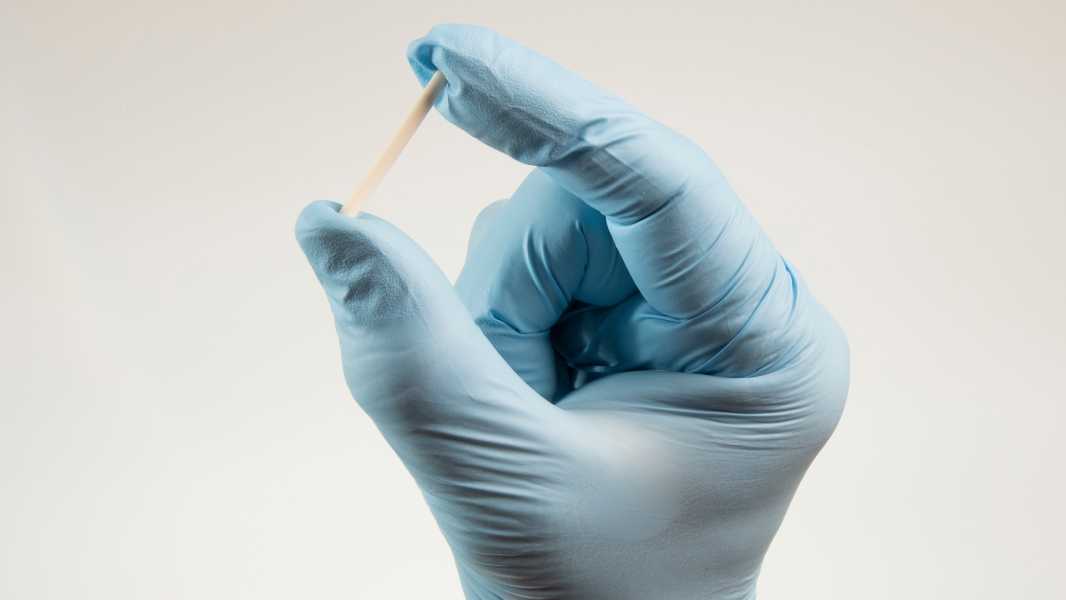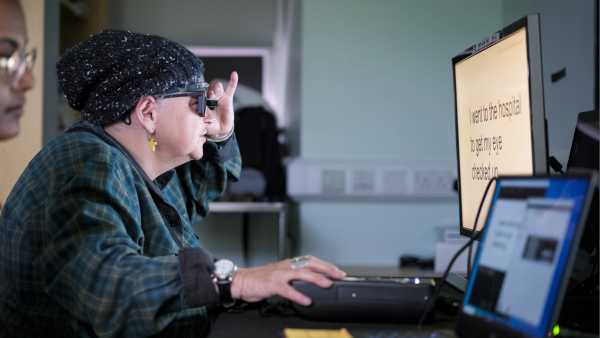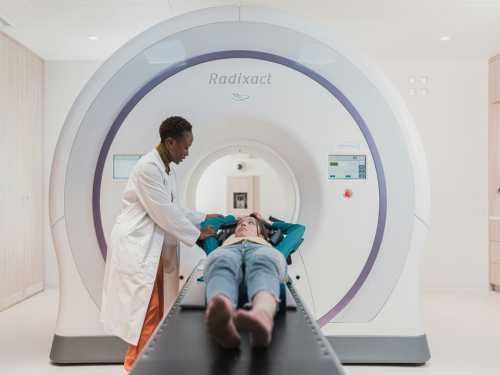
A CT scan shows a displaced implant in the lower left lung of a woman, indicated by the blue arrow. (Image credit: Kareem et al., BMJ Case Reports 2025; CC BY-NC 4.0)
In a highly unique case, a woman's contraceptive implant migrated from her shoulder to her left lung.
A 30-year-old woman from the UK sought medical help after she noticed she could not feel the implant under the skin of her left arm, where it had been inserted six years earlier. (Such implants usually last for three years before needing to be replaced.)
After reviewing the patient’s medical history and performing a series of imaging tests, doctors determined that she had been unable to detect the implant because the initial surgery had been performed incorrectly. As a result, the implant had become dislodged about a week after it was placed, moving from the subcutaneous tissue into a vein in the upper arm. It then reached the heart, and from there was carried through an artery into the lower left lung, where it was eventually detected during a medical scan.
Doctors described the case in a report published January 30 in the journal BMJ Case Reports.
Contraceptive implants are considered one of the most effective methods of reversible contraception. Users have only a 0.05% chance of an unintended pregnancy in the first year of using the implant if it is inserted correctly. These implants are small plastic rods, about 1.6 inches (4 centimeters) long, that are inserted under the skin of the upper arm.
(Contraceptive implants are different from intrauterine devices (IUDs), although both are long-acting methods of reversible contraception that are placed inside the body.)
In the UK and US, the only contraceptive implant available is Nexplanon.

In exceptional cases, contraceptive implants intended for placement in the upper arm (as shown above) may migrate to other areas of the body.
This implant slowly and steadily releases a dose of progestin — a synthetic version of the hormone progesterone — which prevents pregnancy in a number of ways. For example, progestin blocks ovulation, which is the regular release of an egg from the ovaries into the fallopian tubes during the menstrual cycle.
Nexplanon provides reliable contraception for three years, after which the hormones in it run out and the device must be removed. Users can then have a new implant inserted.
In rare cases, Nexplanon implants can migrate from the upper arm to other parts of the body, such as the shoulder, chest wall, or arteries in the lungs. A study published in 2017 reported 38 cases of implant migration between 2006 and 2015 to the U.S. Food and Drug Administration. For comparison,
Sourse: www.livescience.com





